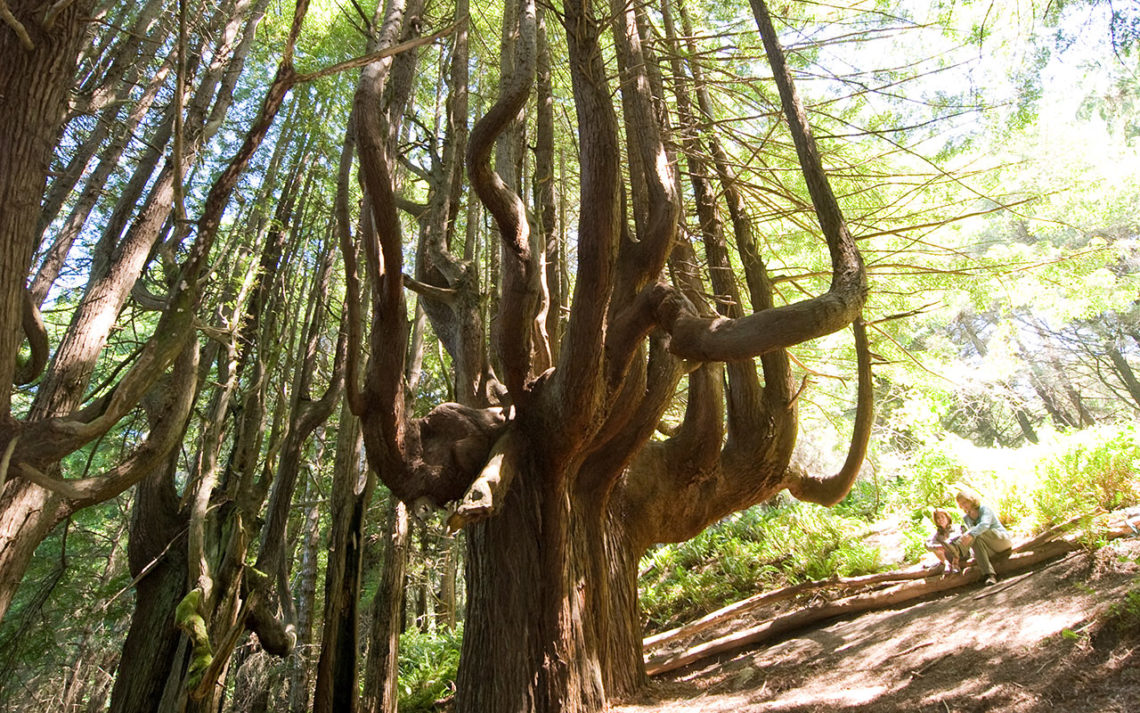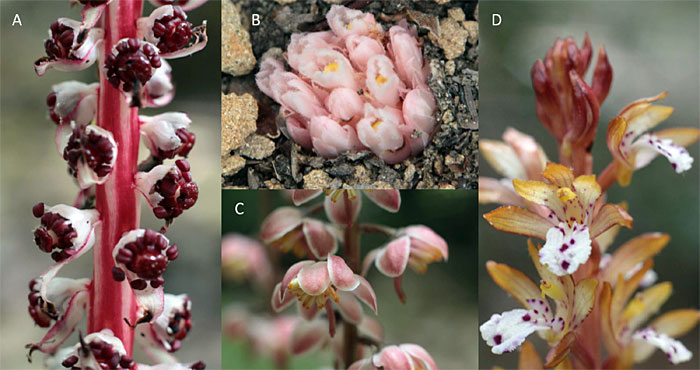Down a steep slope stand scores of ancient redwoods shaped into grand candelabras by fire, salty air and coastal winds. Instead of growing into massive straight columns, stressors caused these trees to sprout branches near the ground that droop like velvet ropes in a theater. Then when conditions improved, the branches grew straight up.

Crucial Habitat for Coastal Species
Because of its steep topography, the Lost Coast contains several ecological zones at multiple elevations from the sea to the ridgeline. The steep slopes of Shady Dell link the sea and the land with a diverse ecosystem.
Shady Dell’s diverse ecosystem includes a rich array of wildlife such as salmon, black bears, Roosevelt elk and mountain lions. Its unique location right on the ocean provides an important landscape connection between water and nutrients and the plants and animals.
Coho Salmon Habitat
One of the most compelling aspects of Shady Dell is its potential to rejuvenate California’s flagging coho or silver salmon.
Coho have been steadily declining in California. Most estimates put them at less than 10 percent of historic levels.
For example, in 1945 one surveyor pulled out more than 60,000 juvenile fish from Usal Creek, which runs next to Shady Dell. Today the number of Usal coho may be just in the hundreds, but with careful restoration, this stream has the potential to support thousands of coho again.
Strange Plants

Watch your step in May and June! Poking up through the leaves and sticks on the forest floor of Shady Dell are the pictured flowers. Rare and often hidden in the shady mixed conifer and hardwood forests of the Pacific Northwest, these flowers are called “mycotrophs” (“myco” meaning “fungus” and “troph” relating to nutrition). Mycotrophs depend on fungi for food, unlike green plants, which make their food from sunlight, water and carbon dioxide. Learn more about these unusual plants on the US Forest Service mycotroph page.
Mycotrophs get sugars from green plants through an intricate network of fungi that grow between the roots of the flowers and the trees. Connected by fungi and the sharing of food, these flowers wouldn’t exist in Shady Dell without their fungal and tree partners.
Mycotrophs are rare because they only occur in places where the partner tree species and fungus are living.